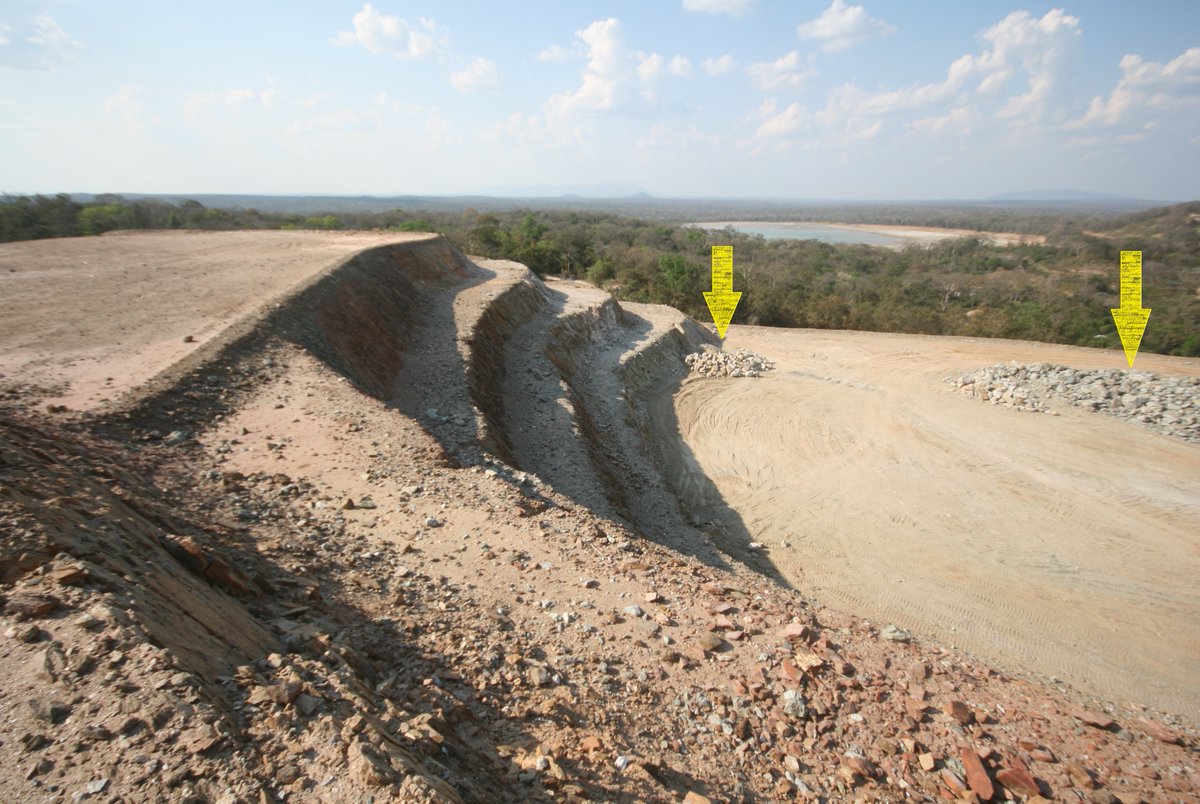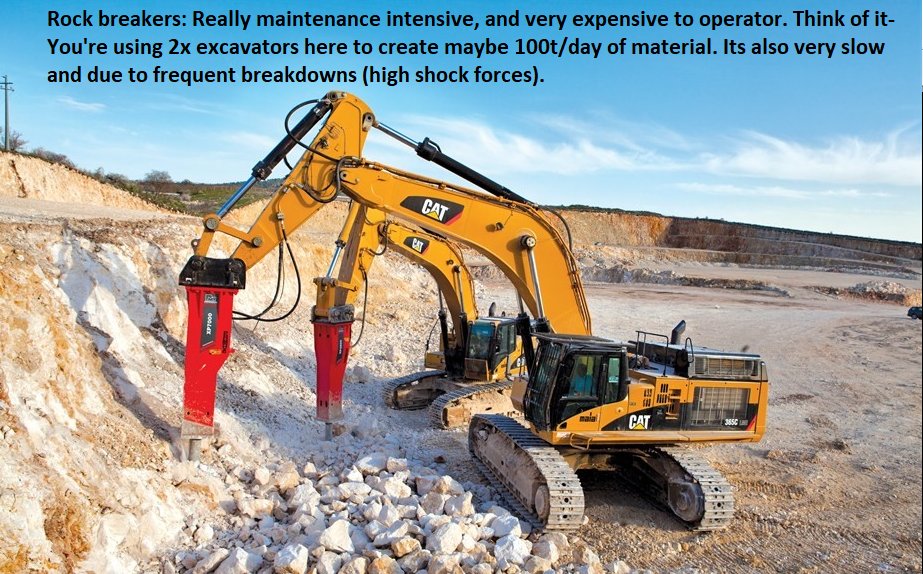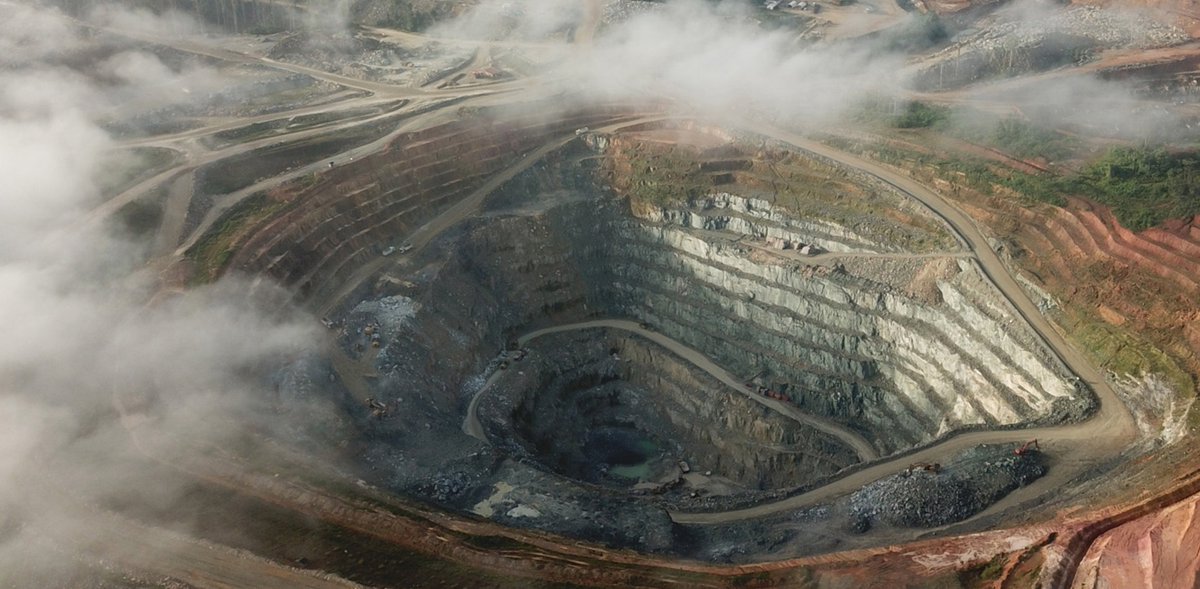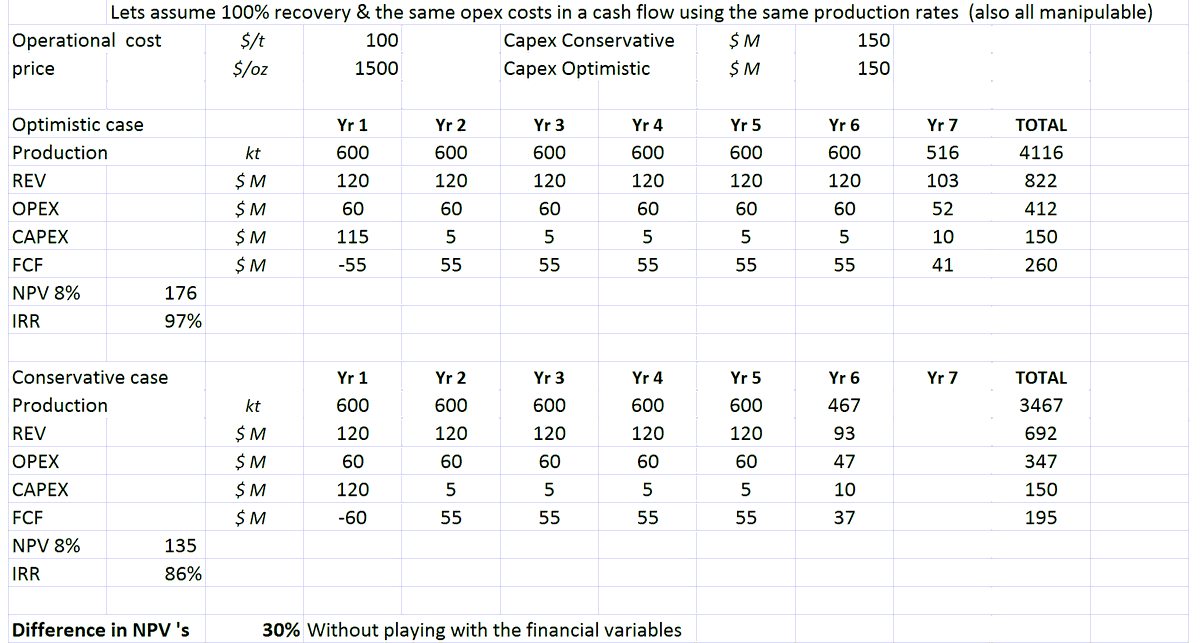
1/9Thread: WHAT TO LOOK FOR ON YOUR NEXT SITE VISIT to any open pit mine: Floor conditions & big rocks. If the floors r not smooth, level & clean -like tabletop- then the trucks will be less productive &mining cost higher than average. The Big rocks are the 1st sign of of trouble 

2/9 Looking up from below at that lower bench in the prev. pic you can see a lot big rocks have been pushed over the edge of the bench. While this immediately postpones the problem, the No. of big rocks on each bench increases as the pit deepens, ↘️ decreasing productivity. 

3/9 Here, on another bench you can see how big rocks affecting productivity. The guys are drilling off a blast pattern on the left, and truck access hampered on loading bench below, making loading & hauling complicated and very expensive. 

4/9 Also, there may be protrusions of solid rock not yet seen sticking up from the bench below that also have to be treated to get the floor level. In talking with the team, they pointed out the big rocks appearing in the blasts (below), blaming faulting & rock hardness. 





5/9 Rock Breaking is sometimes done with a mechanical "pecker" or rock breaker (eg. from elsewhere on the right) but very slow and painful b/c the equipment breaks down a lot. Its a little cheaper and faster to do 2ndary blasting instead, but that comes with its own problems too. 



6/9 If the rock is smaller than about desk-size the simple solution is to place bombs on top of each rock. If the rocks are bigger, it is better to drill (again) & blast the charged up holes (eg. from elsewhere below). Either way its expensive, time consuming & hazardous work. 





7/9 A rule of thumb is that 2ndary blasting is 2-3 times more expensive than primary blasting, but the knock-on increase in load & haul costs is often forgotten. So, it is ALWAYS better to make adjustments to your primary drill & blast design & process to improve fragmentation. 



8/9 The easiest way to improve fragmentation (reduce size & No. of rocks in a blast) is to increase the density of explosives (powder factor) per t of rock blasted, by reducing the burden and spacing. This increases D&B cost/t but also 2ndary blasting costs & milling costs. 

9/9 In the case study shown, it took 8 months & 20 extra guys to blast 400kt! of big rocks, along with a reduced burden & spacing on the drill patterns, a reduction in hole diameter to resolve the problem. After this the total mining cost reduced 22% overall⬅️Higher productivity
• • •
Missing some Tweet in this thread? You can try to
force a refresh




















